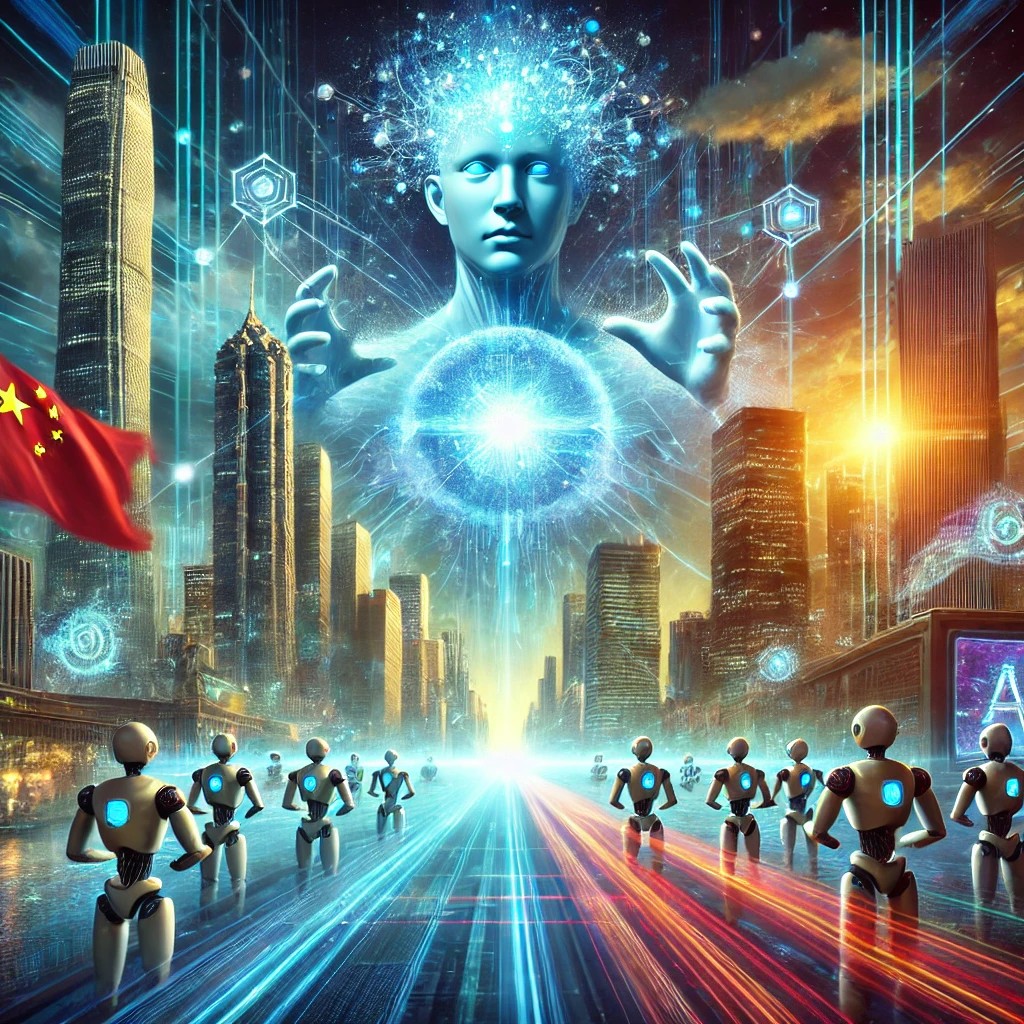Artificial intelligence Democracy
Introduction
Artificial Intelligence (AI) has been dominated by a few major players—Silicon Valley giants like OpenAI, Google, and Meta. However, in the past few weeks, a new name has stormed onto the scene: DeepSeek, a Chinese AI startup. DeepSeek’s latest models are making waves in the AI world, offering competitive capabilities at lower costs. This sudden disruption has not only challenged OpenAI but also raised critical questions about the future of AI development.
DeepSeek’s Entry: A Game Changer
DeepSeek has disrupted the AI landscape by offering powerful models at significantly lower prices. Beijing has effectively "crashed the AI party," stealing the spotlight from OpenAI and other Western companies. As a result, OpenAI has been rushing to roll out new updates to stay ahead, including the introduction of ChatGPT-4o Mini—a free version designed to keep users engaged.
Additionally, OpenAI has introduced Deep Research, a feature that not only provides answers but also shows the research process behind them. However, this feature is restricted to Pro users and comes at a hefty price of $200 per month, with a cap of 100 queries. While this innovation aims to enhance AI’s credibility, it also highlights the growing divide between free and premium AI access.
The AI Arms Race: Europe Joins In
DeepSeek’s impact extends beyond China and the U.S. Europe is also entering the AI race, with the French startup Mistral launching its latest open-source model, Mistral Small-3. Despite its modest name, Mistral claims that its model outperforms many competitors, marking another significant shift in the AI landscape.
China’s AI Strategy: Breaking the Monopoly
For years, AI development was an exclusive club controlled by Silicon Valley. Closed-door partnerships, billion-dollar investments, and proprietary models kept AI advancements within a select few companies. However, DeepSeek is challenging this status quo by offering open-source AI models—a stark contrast to the Western approach of keeping AI locked behind corporate barriers.
Ironically, China—a country known for its strict censorship policies—is now leading the charge in open AI development. Meanwhile, Western governments and corporations are moving in the opposite direction, pushing for stricter regulations and proprietary AI systems. The debate over whether these restrictions are driven by safety concerns or by a desire to maintain power is now at the forefront of AI discourse.
The Future of AI: Open Source vs. Corporate Control
DeepSeek’s rise signals a fundamental shift in AI development. Open-source AI fosters greater innovation by allowing researchers, developers, and small businesses to participate. Instead of AI being controlled by a handful of tech giants, an open AI ecosystem could create a more diverse and inclusive technological future.
However, open-source AI also brings challenges, such as privacy risks, security concerns, and regulatory hurdles. While these issues need to be addressed, the benefits of a more accessible AI landscape far outweigh the risks.
Conclusion
The global AI race is entering a new phase, with China’s DeepSeek leading the charge in open AI development. As Silicon Valley struggles to keep its grip on the industry, the future of AI will likely be shaped by a battle between open-source innovation and corporate control. Whether DeepSeek can sustain its momentum remains to be seen, but one thing is certain—China has rewritten the rules of the AI game.

Comments
Post a Comment